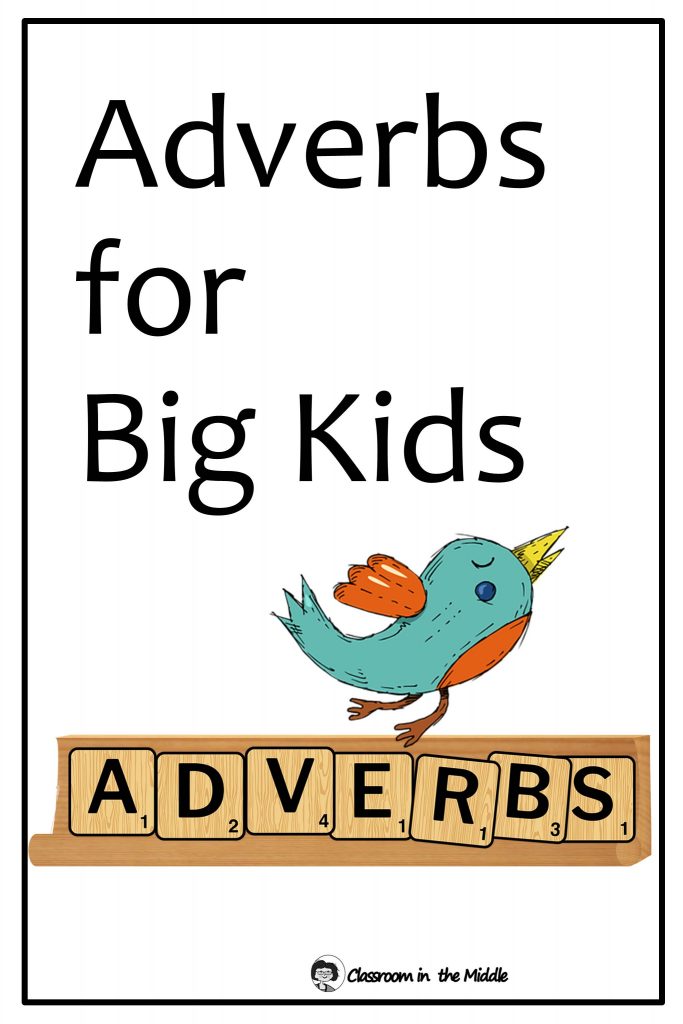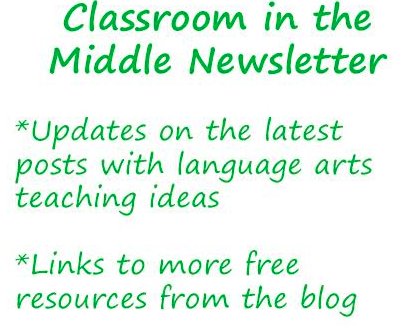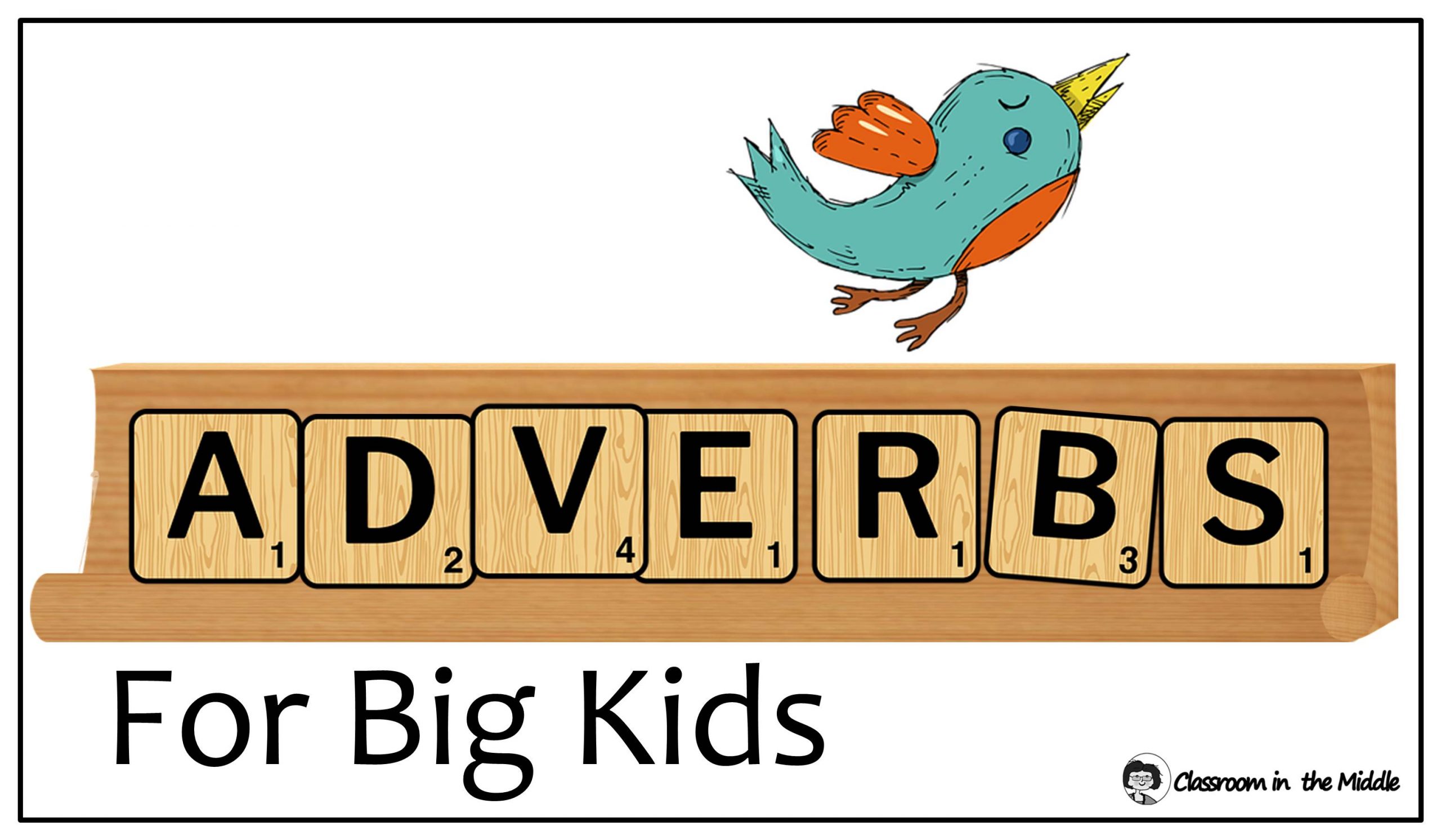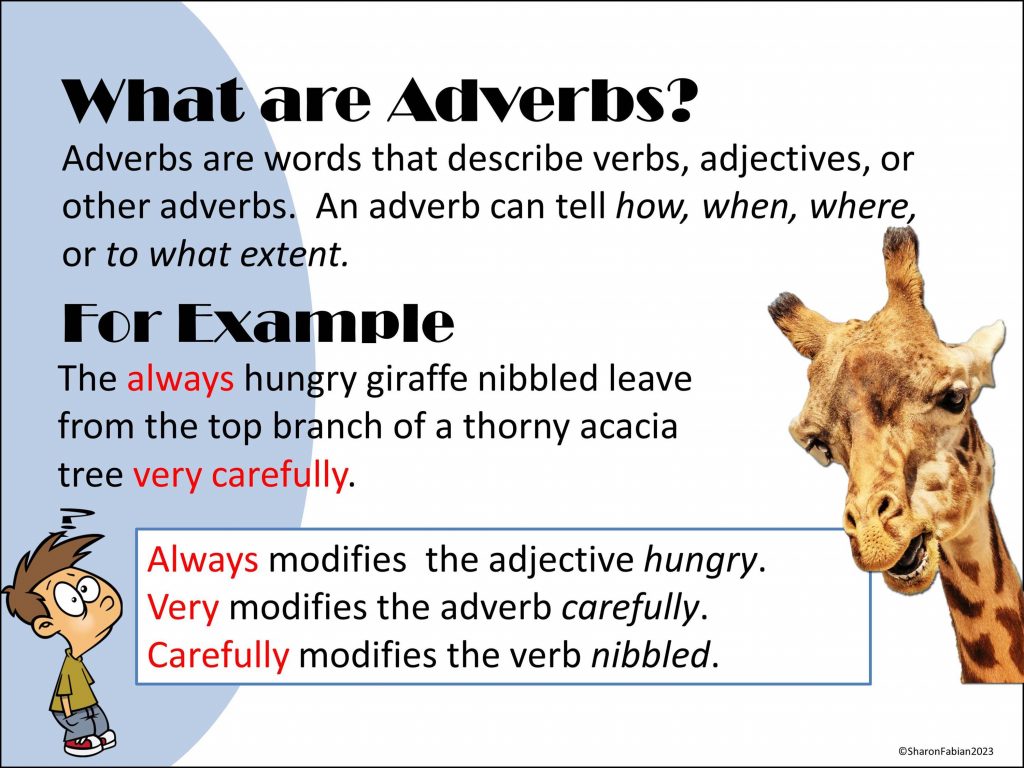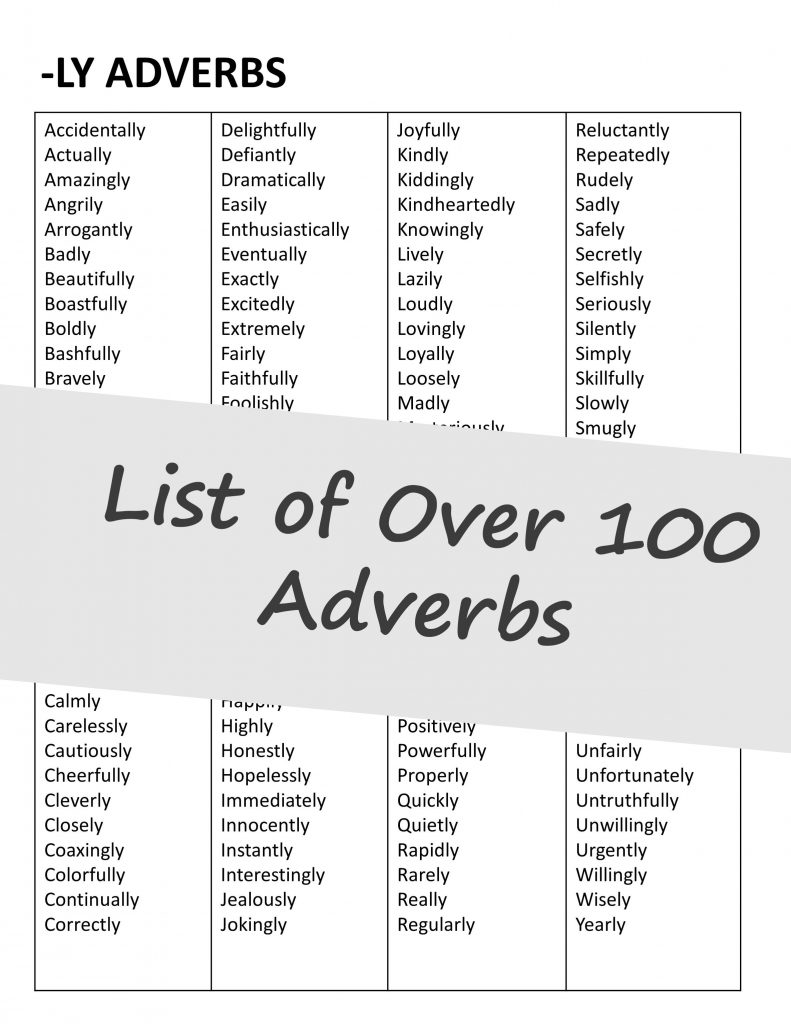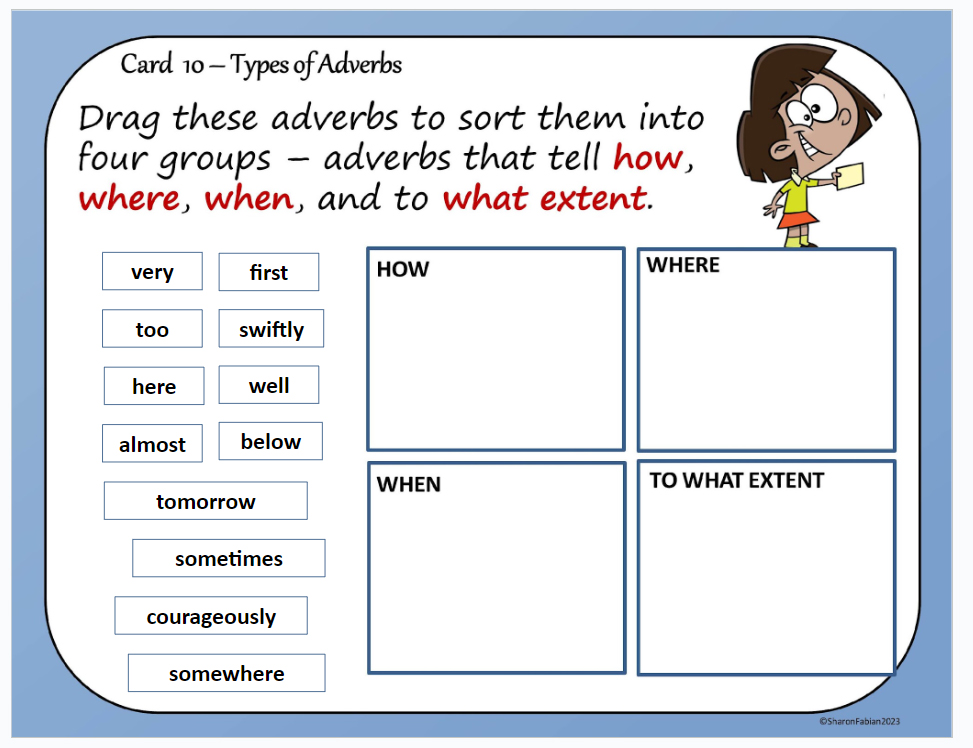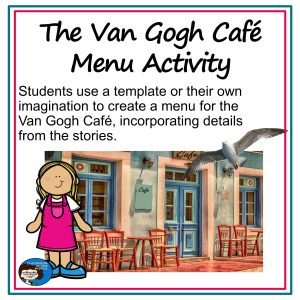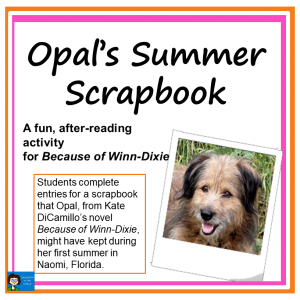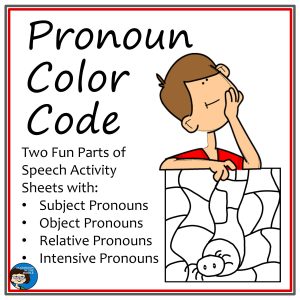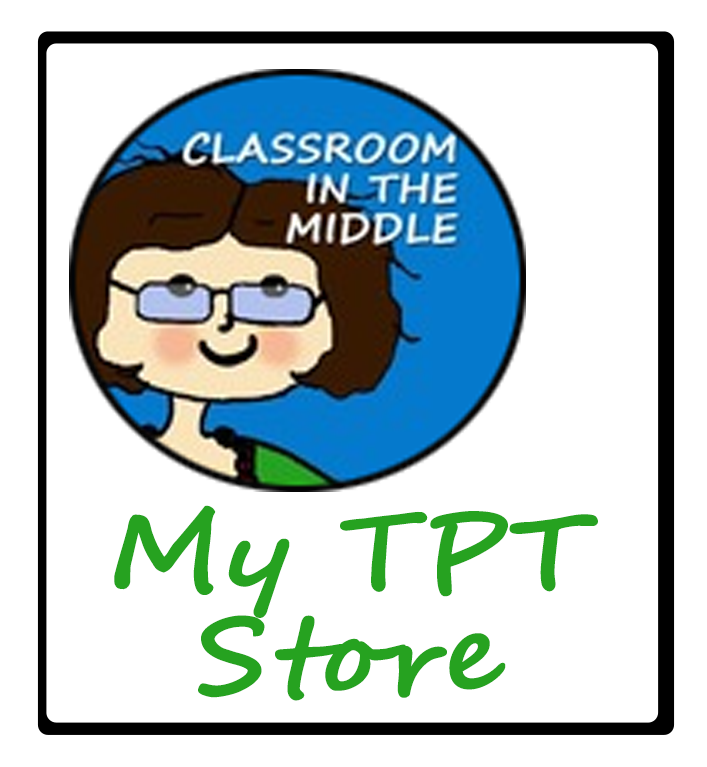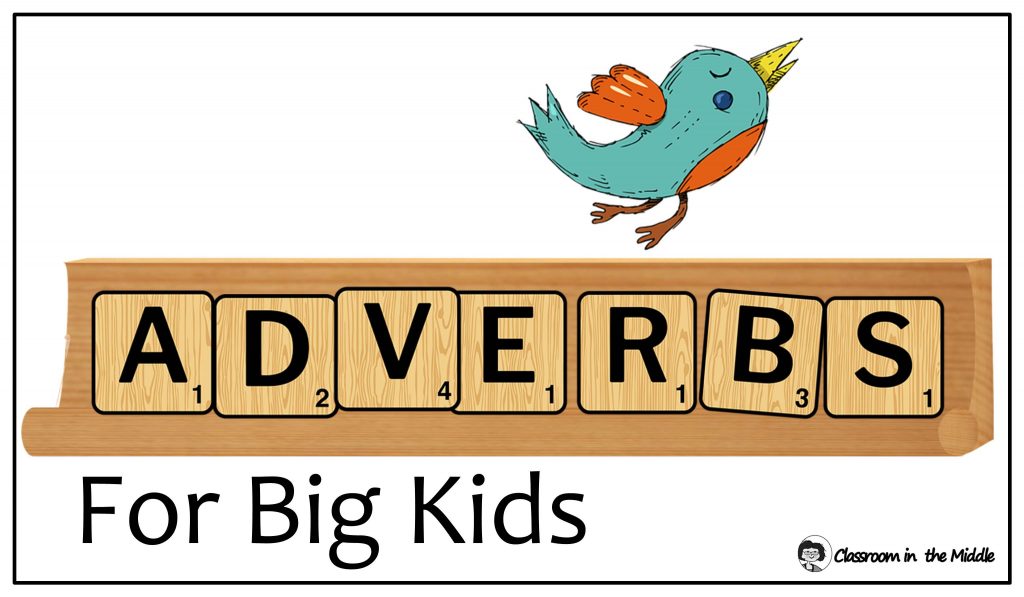
Adverbs are surely the most neglected parts of speech! We cover nouns and verbs in such detail and at multiple levels throughout the school years. Adjectives play a big role in writing and revising lessons. Even conjunctions and pronouns have their place in our language arts curriculum! Do we just run out of steam when it comes to adverbs?
Well. hopefully, there’s a little something left for poor old adverbs, because even a basic adverbs lesson, such as changing adjectives to adverbs by adding -ly, can have a big impact on a kid’s vocabulary and writing skills!
Of course not all adjectives can be changed to adverbs, and I thought that fact might make for an interesting activity, which I used on some of my Adverbs Task Cards. Here’s an example.
Whether you are going for generally useful information such as this or for a more specific standards-based skill such as using relative adverbs, there are actually lots of interesting lesson topics to be found under the (underappreciated) heading of adverbs!
Here are the five that I chose to include in my adverb resources:
* Adverbs that tell how, when, where, and to what extent
* Relative adverbs
* Interrogative adverbs
* Forming –ly adverbs
* Using adverbs in writing
Identifying adverbs can be tricky for kids as well, even in middle school and beyond, because they generally have had less familiarity with locating adverbs than other parts of speech, so I’ve incorporated this skill into my adverbs slide presentation and some of my task card activities as well. As an example of this, here is the first informational slide from the slide presentation.
To help kids build familiarity with adverbs, I also put together a big, two-page, list of adverbs. Kids could keep a copy of the list ln their language arts notebooks to use as needed, or you might find it useful in planning additional classroom activities. The list is included with the printable version of the adverb task cards. Here you can see the ly adverbs page; there is also a page of adverbs by types – adverbs that tell where, when, to what extent, ect.
For some kids, maybe descriptive adverbs do come under the “We’ve already done that!” category. Once they’re ready to move on, relative adverbs and interrogative adverbs are sure to provide some lessons that won’t elicit that familiar response. The term relative adverb may be a new one for middle graders, even though most have been using them in their writing and coming across them in their reading for years now. Relative adverbs (when, where, why) can be approached in two ways with middle graders – one, as a new grammar topic for those kids who are already fairly fluent in their use but have never heard the terminology, and two, as a lead-in to writing sentences with dependent clauses for those who need to develop that skill.
Interrogative adverbs, (when, where, why, how) will probably be more familiar, and so easier to get into, even though interrogative adverb may also be a new term for many.
Wherever kids are in their writing skills, using adverbs (whatever type) in their writing is an important step and worth spending time on for sure!
As an added incentive to keep the kids interested, I’ve tried to include a number of different activity types in my task card set. Here are the activities I’ve included:
•Identify the adverbs
•Identify the words they modify
•Choose the adverbs
•Sort adverbs
•Write with adverbs
•Revise using adverbs
•Define adverbs
In case you would like to know, my slide presentations are PowerPoints and also have TPT Easel versions included. My task cards include both the PDF for printing plus a digital version in either an Easel or a Google slides format.
Here you can see one of the cards with a sorting activity in its Google slides format.
Here’s a link to check out the previews: Adverbs Bundle. I hope that these resources or the ideas in this post will be helpful as you plan upcoming parts of speech lessons for your kids!
